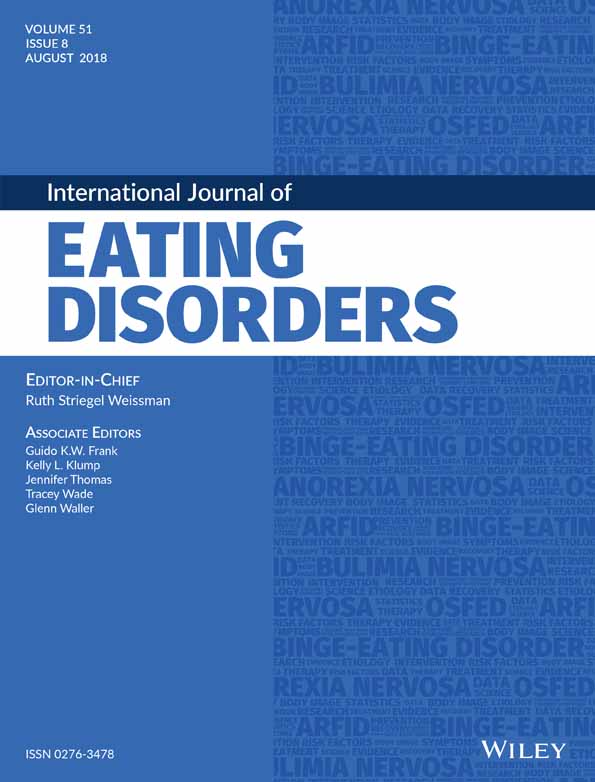Relationship between desired weight constructs and eating disorder severity following treatment for anorexia nervosa
Funding information: Eunice Kennedy Shriver National Institute of Child Health and Human Development, Grant Number: F32 HD089586; National Institute of Mental Health, Grant Numbers: K01 MH080020, T32 MH082761
Abstract
Background
Desired weight is an indicator of illness severity in youth with anorexia nervosa (AN), but its impact on eating disorder symptoms over time and in adults is unknown. This study examined longitudinal associations between two desired weight constructs (desired weight percentage, weight difference percentage) and eating disorder severity and body mass index (BMI) in patients aged 16–62 years old with AN presenting for inpatient or day hospital treatment.
Method
Participants (N = 160) completed the Eating Disorder Examination and measures of height and weight at treatment admission, discharge, and 3, 6, and 12 months post-discharge. Desired weight percentage was calculated as [desired BMI(desired weight in kg/height in meters2)/healthy BMI] × 100. weight difference percentage was calculated as [(actual weight-desired weight)/actual weight] × 100.
Results
At admission, participants were approximately 78.6% of a healthy BMI and desired to be 81% of a healthy BMI. During the year following treatment, participants were 89% of a healthy BMI, but wanted to be 86% of a healthy BMI. Individuals with lower desired weight percentage (wanting to be a lower percentage of a healthy BMI) or higher weight difference percentage (wanting to lose a larger percentage of weight) at treatment admission endorsed greater eating disorder severity across time. Additionally, individuals with higher desired weight percentage or weight difference percentage had higher BMIs at intake, and greater increases in BMI over time.
Discussion
Results highlight that desired weight constructs represent correlates of illness severity in AN and may inform an individual's likely weight trajectory during and after treatment.




